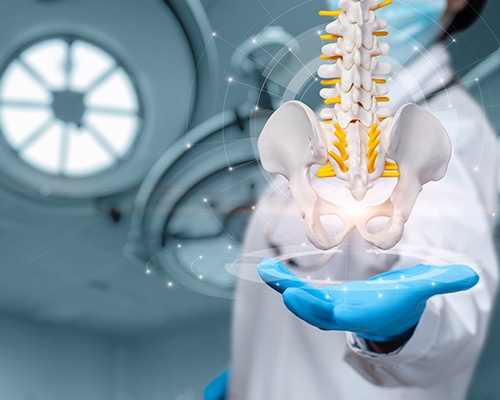
Spine surgery has traditionally been associated with significant recovery times and limited postoperative mobility. Advancements in medical technology have introduced innovative techniques designed to preserve motion and improve outcomes for patients. Let’s explore some of these advanced surgical techniques and their benefits.
Innovative Techniques in Spine Surgery:
Artificial Disc Replacement:
Artificial Disc Replacement is a cutting-edge technique that involves replacing a damaged spinal disc with an artificial one. Unlike traditional spinal fusion, which limits movement by fusing vertebrae together, artificial disc replacement preserves the natural motion of the spine. This technique is particularly beneficial for patients with degenerative disc disease.
Dynamic Stabilization Systems:
Dynamic stabilization systems use flexible materials to stabilize the spine without completely restricting movement. These systems provide support while allowing for a range of motion, making them an excellent option for patients with spinal instability.
Minimally Invasive Spine Surgery (MISS):
Minimally Invasive Spine Surgery techniques involve smaller incisions, resulting in less damage to surrounding muscles and tissues. Procedures such as endoscopic discectomy and minimally invasive lumbar decompression (MILD) help preserve motion and significantly reduce recovery times compared to traditional open surgeries.
Benefits of Motion-Preserving Spine Surgery:
Enhanced Mobility:
By preserving the natural motion of the spine, these innovative techniques allow patients to maintain a more active and flexible lifestyle post-surgery.
Reduced Pain:
Motion-preserving surgeries effectively address the source of pain while maintaining spinal function, providing lasting relief.1
Quicker Recovery:
Patients undergoing motion-preserving spine surgery often experience shorter recovery periods and can return to their daily activities faster than those who undergo traditional spinal fusion.
Lower Risk of Adjacent Segment Disease:
Preserving motion helps reduce the risk of adjacent segment disease, a condition where the segments above or below a spinal fusion experience increased stress and degeneration.
Innovative motion-preserving spine surgery techniques offer significant advantages for patients suffering from spinal conditions. These procedures can alleviate pain while helping maintain flexibility and improve overall quality of life.
AUTHOR: Dr. Payam Moazzaz is a board-certified orthopedic spine surgeon in California specializing in robotic-assisted minimally invasive spine surgery.
Reference:
1. https://journals.sagepub.com/doi/pdf/10.1177/2192568219896541/








